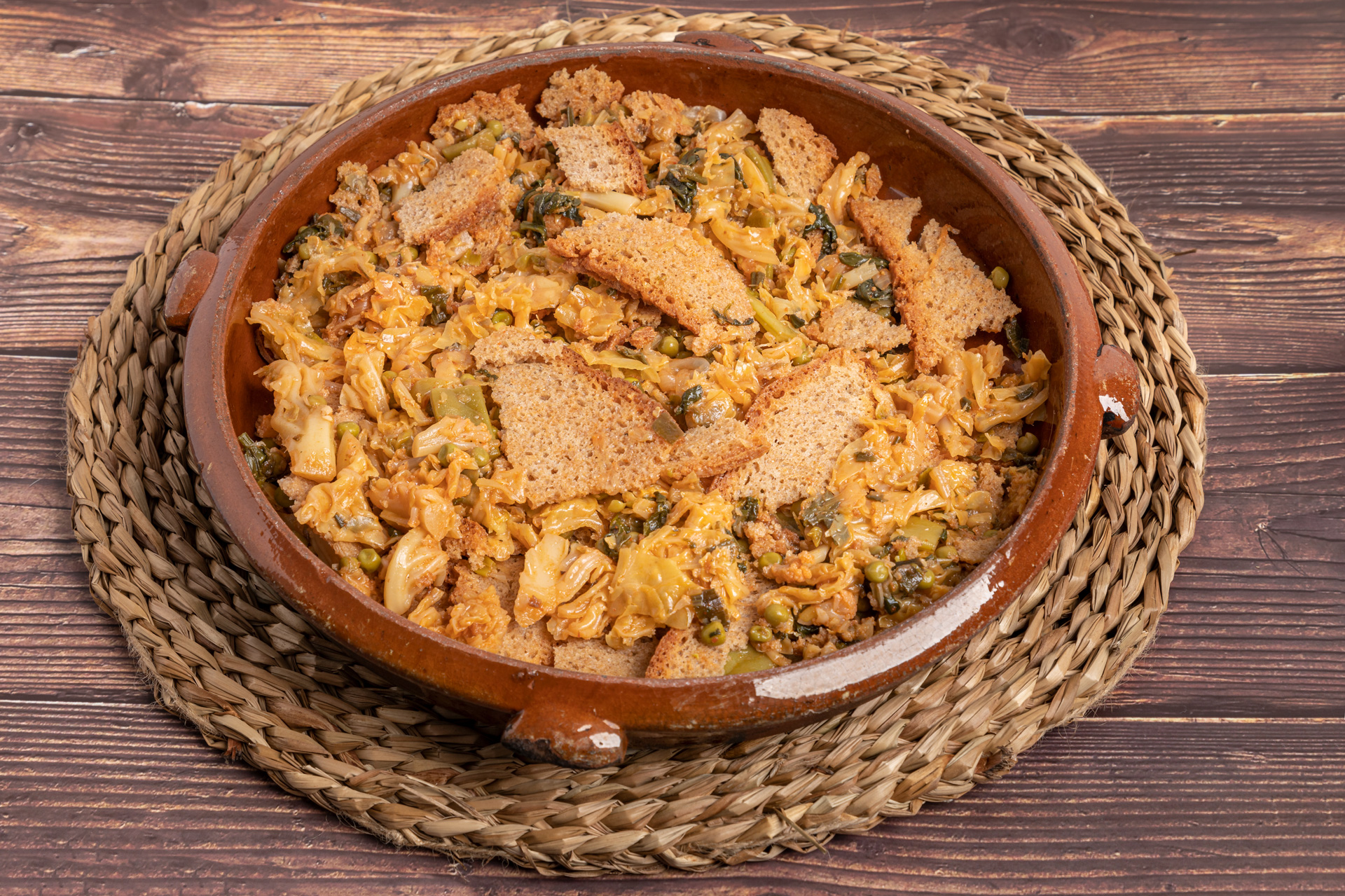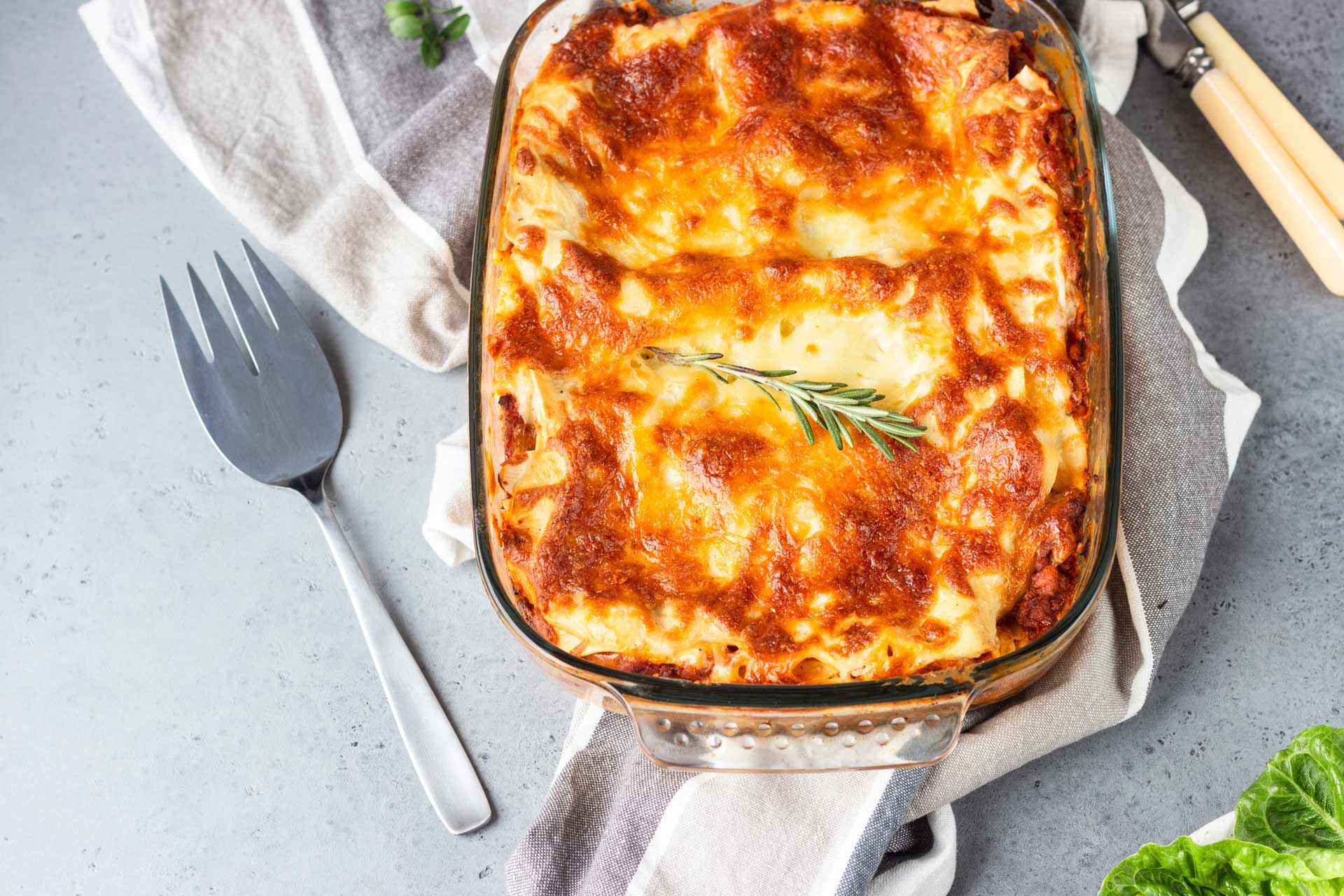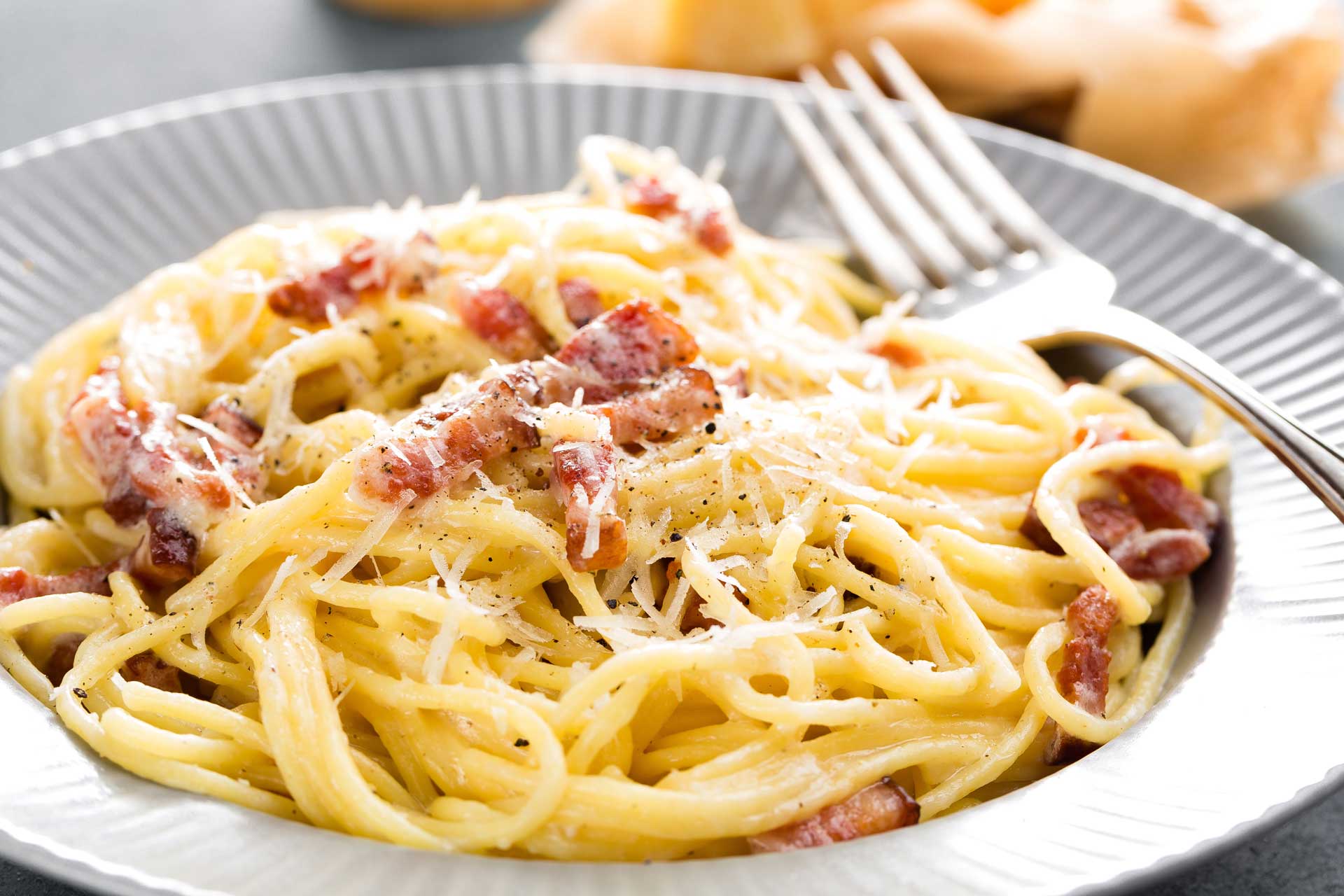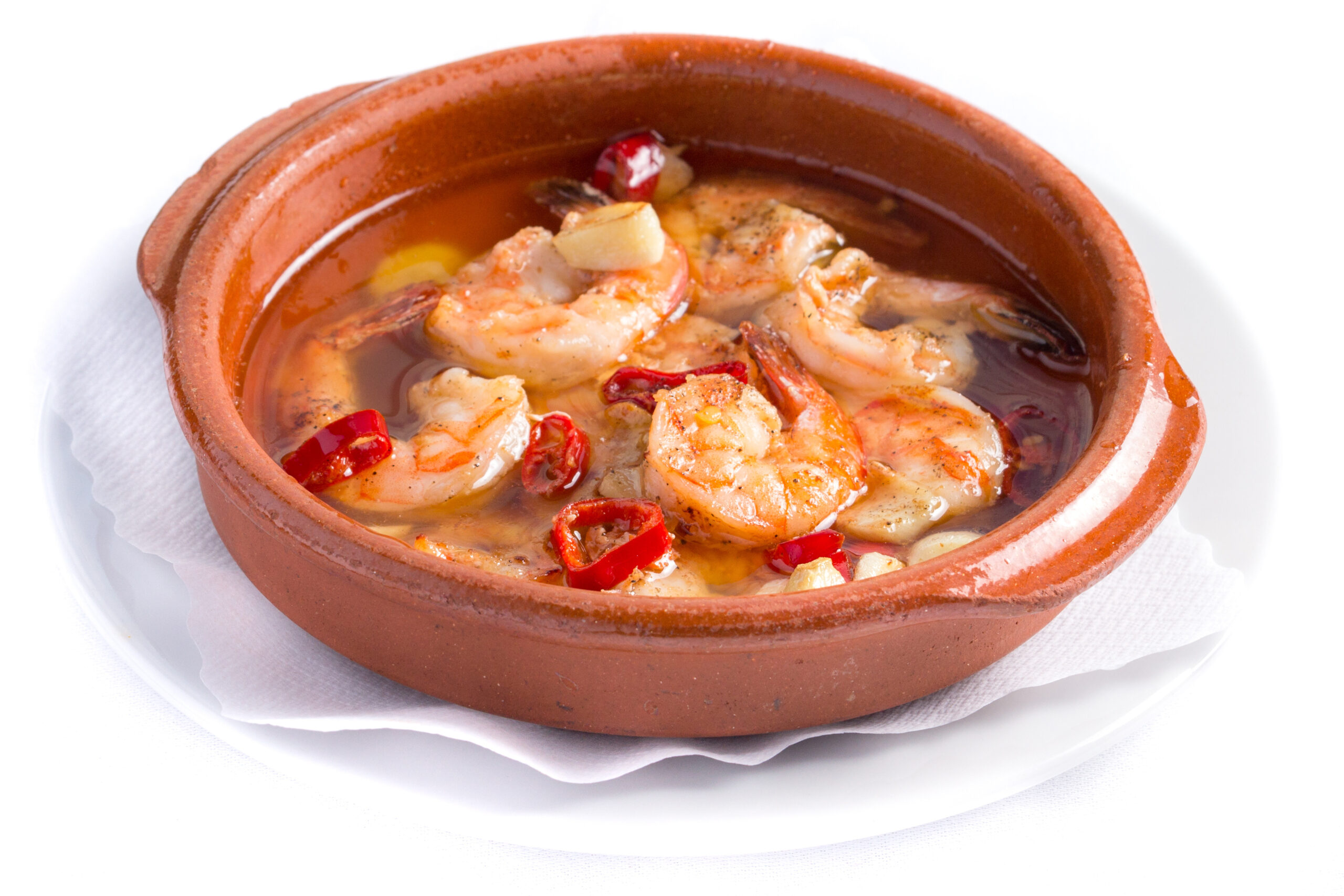Genovese pesto is one of the most iconic sauces from the Liguria region in northern Italy. Its creamy texture and intense flavor of basil, pine nuts, and cheese are achieved through a raw emulsion with extra virgin olive oil, an essential ingredient that adds body, aroma, and authenticity.
Contenidos / Contents
Why this Genovese pesto recipe is healthy and Mediterranean
Pesto Genovese is a raw sauce, made without cooking or processing. Fresh basil is rich in natural antioxidants such as eugenol, and pine nuts contain monounsaturated fatty acids and essential minerals. Extra virgin olive oil adds vitamin E, healthy fats, and enhances the nutritional profile. All this without additives or preservatives.
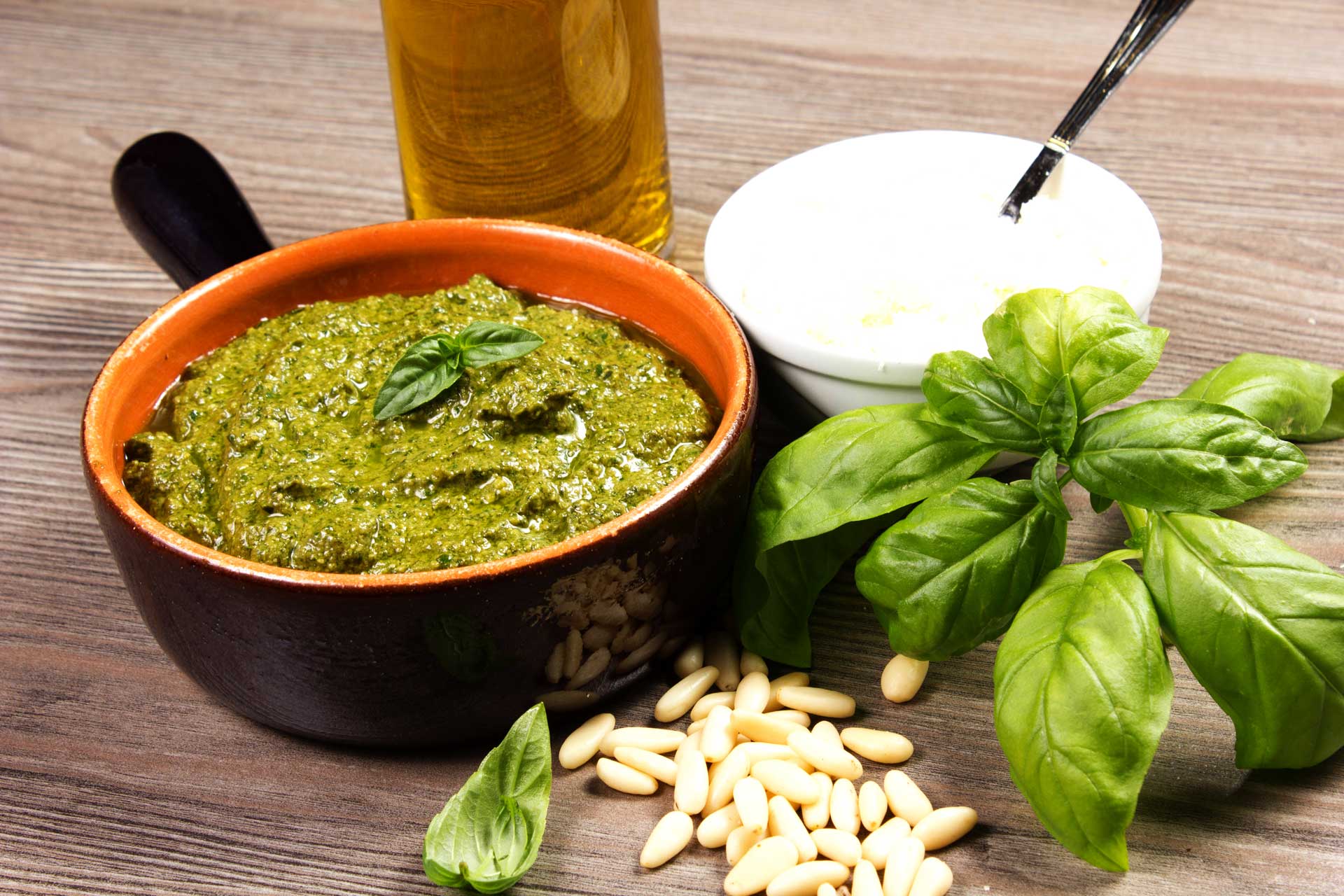
Ingredients for traditional Genovese pesto
For the sauce (6 servings of pasta):
- 2 small garlic cloves
- 30 g fresh basil leaves (leaves only, no stems)
- 60 g grated Parmesan cheese
- 30 g pecorino cheese (optional, adds a more intense flavor)
- 40 g pine nuts
- 100 ml extra virgin olive oil (preferably Arbequina)
- 1 pinch coarse salt
Tools needed
- Marble mortar and wooden pestle (optional but traditional)
- Food processor or hand blender
- Silicone spatula
- Glass jar for storage
Step-by-step instructions for making an excellent Genovese pesto
Prepare the ingredients:
Gently wash the basil leaves and dry them carefully. Grate the cheeses if you haven’t already done so. Peel the garlic cloves.
Blend:
In a mortar or food processor, start by crushing the garlic with a pinch of salt. Add the pine nuts and continue blending until you have a paste. Add the basil leaves little by little, working with circular movements (if using a mortar) or gentle pulses (if using a blender) to avoid heating the mixture.
Emulsify:
Add the grated cheeses and mix until well combined. Finally, pour in the extra virgin olive oil in a thin stream while continuing to blend, until you have a thick, bright green sauce with a creamy texture. It should not be runny.
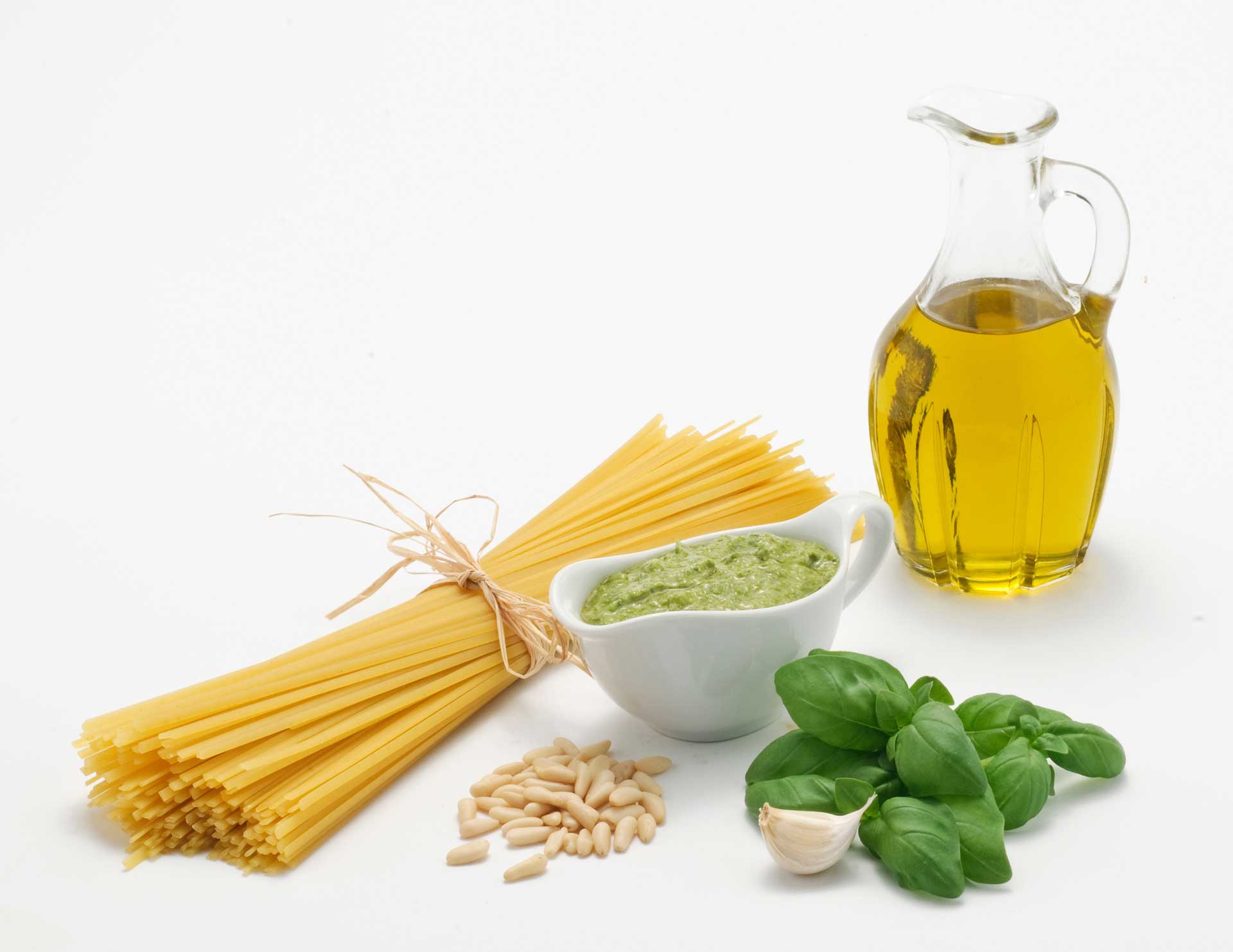
Protip
To preserve its color and freshness, add an extra tablespoon of EVOO on top before storing the pesto in an airtight jar. If you’re going to use it with pasta, don’t heat it directly in the pan: add a few tablespoons of the pasta cooking water to emulsify and lighten it just before serving.
Variations on Genovese pesto
- With walnuts: Replace the pine nuts with walnuts or almonds for a more economical version.
- Dairy-free: Use nutritional yeast instead of cheese for a vegan version.
- With arugula or spinach: Mix 50% basil with green leaves to soften the flavor and vary the nutrient profile.
Nutritional values per serving (approximate – 2 tablespoons)
- Calories: 210 kcal
- Fat: 21 g
- Carbohydrates: 2 g
- Protein: 4 g
- Fiber: 1 g
Frequently asked questions (FAQs) about Genovese pesto
How long does homemade pesto keep?
Up to 5 days in the refrigerator if well covered with oil. You can also freeze it in portions.
Can I use another vegetable oil?
Not recommended. Only extra virgin olive oil guarantees the authentic flavor and texture of pesto.
What pasta goes best with it?
It is traditionally served with trofie or trenette, but it also goes well with spaghetti, gnocchi, or even as a base for pizzas and sandwiches.
Can I leave out the pine nuts?
Yes, but their fat and texture help to emulsify the sauce. You can replace them with cashews, walnuts, or almonds.

